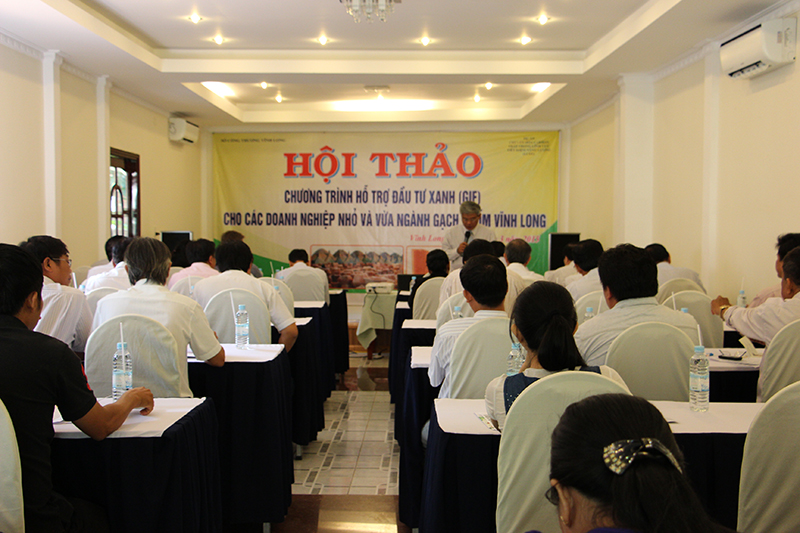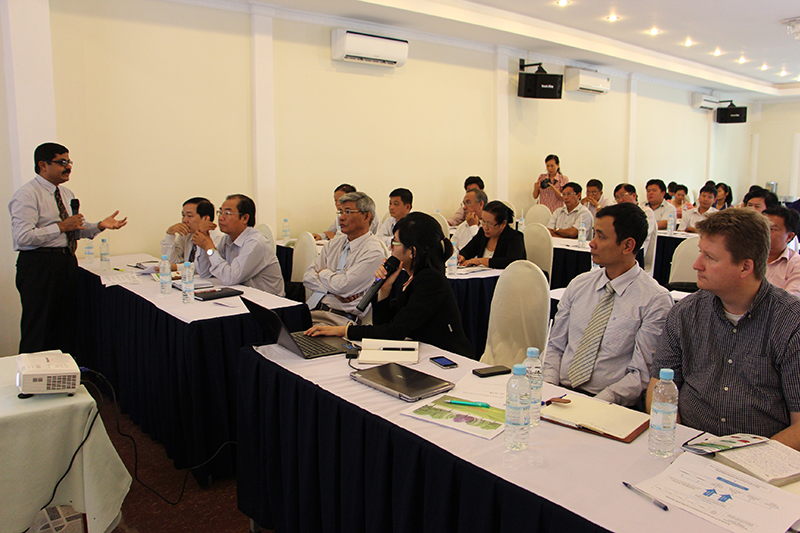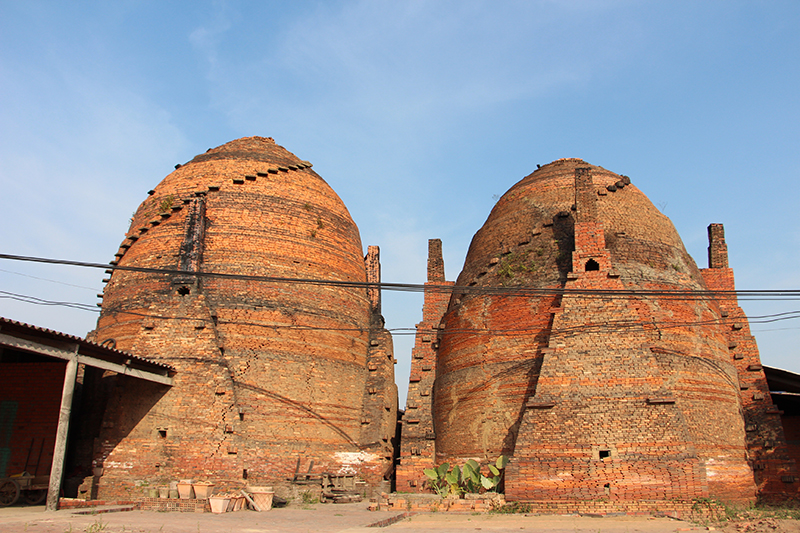On March 13, the Green Investment Facility (GIF) Workshop for Vinh Long brick, ceramic enterprises was held in Vinh Long with participation of SMEs in the sector of brick and ceramic production. After Hanoi, Vinh Long is the second province selected by LCEE Project for introducing its financial mechanisms in a workshop.
Attendants in the workshop are the representatives of the Vinh Long Department of Industry and Trade; representatives of the Can Tho city Department of Industry and Trade, LCEE Project team, representatives of the bank in the province and about 30 business owners.

Speaking at the workshop, Mr. Nguyen Minh Tho - Director of the Vinh Long Department of Industry and Trade elucidated the difficulties that the businesses are facing, such as their small-scale production, energy-consuming traditional production methods, environmental pollution, and lack of capital for investment in technological innovation.
This conference is an opportunity for LCEE Project to introduce to the manufacturing enterprises in Vinh Long province on converting the traditional brick kiln to the continuous brick kiln.

Senior Advisor of the LCEE Project in his introduction into the Project
Senior Advisor of the project, Mr. Reddy Amanarth introduced the LCEE Project and the Green Investment Facility (GIF) with its financial support for energy-saving projects. According to Mr Amanarth, for participation in projects, the enterprises need to make careful preparation before investing, especially in improving the capacity of their technical team and staff to achieve the best implementation of their would-be projects.
To help business owners better understand the continuous kiln technology, Dr. Nguyen Xuan Quang presented the operation mechanism, as well as the advantages that go with this type of tunnel kiln. Accordingly, the continuous kiln utilizes thermal cycling, reuses the excess heat, thus saves energy.
However, Dr. Nguyen Xuan Quang emphasized, when changing to continuous kiln, businesses need a continuous production. Because each time the kiln is stopped, the cost for restart can be very costly. Therefore, for continuous furnace, the enterprises need to produce a specific plan, as well as to find stable outlets for their products.

Project officers in reply to questions from enterprises
Mr. Bui Huu Mai, the chairman of the Vinh Long Ceramics Association revealed that currently, a number of businesses in the province of Vinh Long have converted to continuous kiln. In fact, this is the energy-saving technology, saving manpower and bringing about high economic efficiency with various types of products under firing. At the same time, it also reduces the product defect and the environmental pollution.

Traditional brick kilns in Vinh Long
By the end of the workshop, the enterprises which are interested in the project and its financial mechanism were instructed on how to join the project and to complete the application form.
|
Most of the bricks, ceramic production enterprises in Vinh Long use raw rice husk for kiln firing. If burned by the traditional method, it needs 550-600 grams of rice husk to produce one piece of brick. Meanwhile, if using technology for continuous kiln, one produced brick needs from 200 to 250 grams of rice husk. A roughly estimated saving of 50% of used energy and it may reduce the environmental pollution by 80%. |
Do Trong Tan
